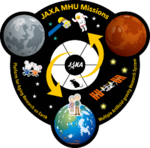This is an archive of information released in the past.
Disclaimer: It may contain broken links or outdated information. Some parts may not function in current web browsers.
*Visit https://humans-in-space.jaxa.jp/en/ for the latest information.

Experiment
- News
- Kibo Utilization Strategy
- Kibo Utilization Plan
- List of JAXA's Utilization Themes
- Experiment Facilities
- Space Environment Utilization
- Archive
World's first long-term habitation of mice on the International Space Station in a gravitational environment simulating the Moon! -- A first step toward expanding human activities into deep space.

Japan Aerospace Exploration Agency (JAXA)
Summary
- JAXA has developed a research platform, MARS (Multiple Artificial-gravity Research System)*1, capable of simulating gravitational environments of different celestial bodies such as the Moon and the Mars in the variable range of gravities (G) from 0G to 1G, and has installed it on board "Kibo".
- During JAXA's fourth rodent research mission conducted in May/June 2019, mice were reared on board Kibo in an artificial gravity environment simulating the Moon's gravity (about one sixth of that on the Earth) for the first time in the world. All the mice were successfully returned back to the Earth alive.
- Working with the research team of the first JAXA rodent research mission (Principal Investigator: Professor Satoru Takahashi from University of Tsukuba), JAXA will analyze the specific behaviors of the mice in the one-sixth-gravity environment, comparing the data acquired during the fourth mission with those already obtained in the microgravity (µG) and artificial earth gravity (1G) environments.
- Recently, international research activities, especially those in U.S.-Japan cooperation, are being accelerated to examine the physical adaptation of animals to environments of the Moon and the Mars under gravities lower than on the Earth with a view to conducting human space exploration in future. The success of the long-term habitat mission in a lower-gravity environment will allow Japan to become the first to provide the world with a research platform for such exploration.
Mission Overview
As a technical demonstration for international space exploration toward the Moon and the Mars, six wild-type mice were reared for 32 days from May 5 to June 5 of 2019 in a low-gravity environment simulating that on the Moon (about one sixth of the Earth's gravity) and were all returned alive to the Earth on the 17th operational vehicle of the Dragon spacecraft (SpX-17). With this success, Japan has acquired the unique advantage that can provide opportunities for conducting experiments in various gravitational environments simulating gravities of more remote astronomical bodies in ISS/"Kibo" while it is orbiting 400 km above the Earth surface. In possession of the "MARS"*1 experimental facility capable of varying the gravitational load from µG to 1G in space, Japan is expected to lead the first step for accumulating fundamental biological data toward the international space exploration. An increasing number of missions for the international space exploration that use Kibo as a platform for technical demonstration are prospected.
Motion video showing feed intake in different gravitational environments
Under the artificial Moon gravity (artificial 1/6G) environment (Video 2), it was observed that the activities and physical behaviors of the animals varied clearly compared with those of the microgravity (μG) environment (Video 1) and artificial Earth gravity (1G) environment (Video 3).
Microgravity (µG) and artificial Moon gravity (artificial 1/6G) in the fourth mission
(Video 1) In the microgravity environment, a mouse accesses to the food bar with its body floating.
(Video 2) In the Moon gravity environment, a mouse accesses to the food bar in flexible positions as its body takes time while falling from floating position but then it "lands" on the bottom floor of the cage.
[Reference] Artificial Earth gravity environment (artificial 1G) in the first mission
(Video 3) A mouse accesses to the food bar with its hindlimbs standing on the bottom floor of the cage as on the Earth.
Related Topics
- *1 Development of new experimental platform 'MARS' - Multiple Artificial-gravity Research System - to elucidate the impacts of micro/partial gravity on mice (September 26, 2017)
References to JAXA rodent research mission
Space missions
- Horie K et.al. Sci Rep. 2019 May 21;9(1):7654.
- Tominari T et.al. Sci Rep. 2019 Apr 29;9(1):6614.
- Mao XW et.al. Int J Mol Sci. 2018 Aug 28;19(9).
- Shiba D et.al. Sci Rep. 2017 Sep 7;7(1):10837.
Ground-based preliminary studies
- Horie K et.al. Biochem Biophys Res Commun. 2018 Jun 27;501(3):745-750.
- Ishikawa C et.al. PLoS One. 2017 Jun 7;12(6):e0177833.
- Morita H et.al. J Physiol Sci. 2017 Jul;67(4):531-537.
- Shimbo M et.al. Exp Anim. 2016 May 20;65(2):175-87.
- Tateishi R et.al. PLoS One. 2015 Oct 29;10(10):e0141650.
- Morita H et.al. PLoS One. 2015 Jul 29;10(7):e0133981.
Contact point
For more information or any questions of the JAXA rodent research mission in "Kibo", please contact us at the following email address.
Kibo Utilization Promotion Office
*All times are Japan Standard Time (JST)
| Copyright 2007 Japan Aerospace Exploration Agency | Site Policy |